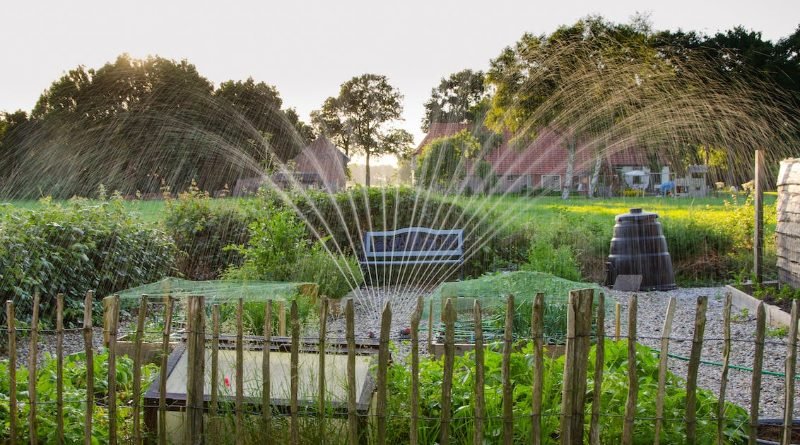Harnessing Innovation: The Role of Technology in Modern Irrigation Management
In agriculture, the quest for efficiency and sustainability is unceasing. One crucial aspect of agricultural practice is irrigation, a process that has undergone a remarkable transformation thanks to technological advancements. Gone are the days of manual watering and guesswork; today, farmers are leveraging cutting-edge technologies to optimize water usage, enhance crop yields, and mitigate environmental impacts.
In this blog, we delve into the pivotal role technology plays in modern irrigation management, exploring its benefits, challenges, and the potential it holds for the future of farming.
Automated Irrigation Systems: A Paradigm Shift
With the advent of automated irrigation systems, farmers have bid farewell to the labor-intensive chore of manual watering. These systems, equipped with sensors and controllers, enable precise scheduling and water delivery tailored to the specific needs of crops. Gone are the days when farmers had to rely on guesswork or manual labor to ensure their fields received adequate hydration. Automated systems can be programmed to distribute water at optimal times, considering soil moisture levels, weather forecasts, and crop requirements.
Precision Agriculture: Targeted Watering Strategies
Precision agriculture employs a data-driven approach to farming, utilizing technologies such as GPS, drones, and remote sensing to assess crop health and soil moisture levels. Farmers can implement targeted watering strategies by analyzing this data, ensuring optimal hydration while minimizing water wastage. For example, drones with multispectral cameras can capture detailed images of fields, allowing farmers to identify areas of stress or drought. This information can then be used to adjust irrigation schedules or deploy precision irrigation techniques, such as drip or micro-sprinkler systems, to deliver water precisely where needed most.
Smart Sensors: Real-Time Monitoring
The integration of smart sensors into irrigation systems has revolutionized monitoring capabilities. These sensors provide real-time data on soil moisture, temperature, and weather conditions, empowering farmers to make informed irrigation scheduling and water allocation decisions. Instead of relying on manual measurements or visual inspections, farmers can access accurate, up-to-date information about soil conditions and crop water requirements from their smartphones or computers. This allows for precise and responsive irrigation management, minimizing the risk of overwatering or underwatering and optimizing crop growth and yield.
IoT Connectivity: Seamless Integration
The Internet of Things (IoT) has facilitated seamless connectivity between various components of irrigation systems. Farmers can remotely monitor and control irrigation operations from smartphones to cloud-based platforms, enhancing convenience and efficiency. IoT-enabled irrigation systems can communicate with each other and with external data sources, such as weather forecasts or soil moisture sensors, to automatically adjust watering schedules based on real-time conditions. This saves farmers time and effort and ensures that crops receive the right amount of water at the right time, regardless of their location.
Water-Efficient Technologies: Sustainability in Action
In the face of mounting water scarcity concerns, developing water-efficient technologies has become imperative. Innovations such as drip irrigation and micro-sprinkler systems deliver water directly to the root zone, minimizing evaporation and runoff. These technologies are particularly well-suited to arid or semi-arid regions with limited water resources, allowing farmers to grow crops sustainably with less water. Drip irrigation, for example, can reduce water usage by up to 50% compared to conventional flood or furrow irrigation methods while improving soil moisture distribution and nutrient uptake.
Data Analytics: Insights for Optimization
The abundance of data generated by modern irrigation systems presents opportunities and challenges. Farmers can glean valuable insights into water usage patterns, crop performance, and resource allocation through advanced analytics, facilitating continuous optimization. Farmers can identify opportunities to improve efficiency, reduce waste, and enhance sustainability by analyzing historical data and trends. For example, data analytics can reveal patterns of overwatering or underwatering, allowing farmers to adjust irrigation schedules.
Climate Resilience: Adapting to Change
As climate change continues to impact weather patterns, farmers must adapt their irrigation practices accordingly. Technology is pivotal in enhancing resilience, enabling proactive adjustments in response to shifting environmental conditions. For example, predictive modeling tools can help farmers anticipate future water availability and plan accordingly. At the same time, weather monitoring systems can provide early warnings of events such as droughts or floods.
Remote Monitoring: Flexibility and Convenience
The ability to remotely monitor and control irrigation systems offers farmers unparalleled flexibility and convenience. Whether they are tending to other tasks or miles away from the fields, they can ensure that crops receive the water they need when they need it. Remote monitoring allows farmers to check irrigation equipment and field conditions from anywhere with an internet connection, using smartphones, tablets, or computers. By leveraging remote monitoring and control technology, farmers can optimize operations while maximizing efficiency.
Integration with Sustainable Practices
Modern irrigation technologies complement and reinforce sustainable farming practices. By conserving water, reducing energy consumption, and minimizing chemical runoff, they contribute to farmers’ overall environmental stewardship efforts. For example, drip irrigation systems can significantly reduce water usage compared to traditional flood irrigation methods while minimizing soil erosion and nutrient leaching.
The Future Landscape: Opportunities and Challenges
Looking ahead, the future of irrigation management is brimming with possibilities. However, realizing its full potential requires addressing various challenges, including accessibility, affordability, and interoperability. We can pave the way for a more resilient and sustainable agricultural future by fostering collaboration and innovation. From smallholder farmers in developing countries to large-scale operations in industrialized nations, there is a need for scalable, adaptable irrigation solutions that can meet the diverse needs and contexts of farmers worldwide. This will require continued investment in research and development and policies and incentives that promote the adoption and diffusion of innovative technologies.
Conclusion
The role of technology in modern irrigation cannot be overstated. These innovations, from automated systems to data analytics, empower farmers to optimize water usage, enhance productivity, and mitigate environmental impacts. While navigating the complexities of feeding a global population while confronting the realities of climate change, technology remains a powerful ally for sprinkler franchises, farmers, and those on a quest for agricultural sustainability.
Also visit Digital Global Times for more quality informative content.

